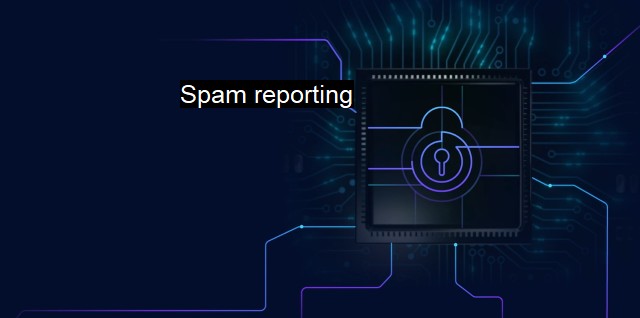What is Spam reporting?
Combatting the Threat of Spam in Cyberspace: The Importance of Reporting for Individuals and Businesses
Spam reporting refers to the process of identifying, flagging, and documenting spam or any type of unsolicited, unwanted, and often harmful message, with the aim of protecting computer users, their systems, and networks. It is vitally relevant to the domain of cybersecurity and antivirus as an effective means to notably combat spam-related threats such as phishing attacks, malware distribution, and other online fraudulence.To appreciate the significance of spam reporting, understanding what spam signifies in the context of cybersecurity becomes essential. Spam generally brings together unsolicited and typically irrelevant or inappropriate messages sent over the internet to a large number of users primarily for advertising, phishing, or disseminating malware. It serves as a primary medium through which cybercriminals disrupt individual privacy and business activities, leading to theft of sensitive information, loss of productivity, or severe damages to a system's integrity and reliability.
Spam reporting, especially, plays an integral role in the overall framework of security by creating a route for the common internet user to effectively participate in the fight against cybercrime. By reporting spam, users help alert internet service providers, email providers and cybersecurity officials about malicious activities, enabling them to take necessary actions. This could entail blacklisting certain IP addresses known to send spam, developing new antivirus algorithms to better detect and eliminate the threats, or implementing legal actions against entities engaged in cybercrime activities.
The act of spam reporting itself is generally seen as a straightforward task: On receiving a suspicious message, the user can report it as spam. Email service providers such as Yahoo, Google, and Microsoft often have a built-in functionality that lets users mark an email as “spam”, allowing automatic redirection of future emails from the same sender to the spam folder. Some sophisticated email service providers even offer a report phishing function that sends the flagged emails for further investigation.
Nonetheless, the process underlying spam reporting isn't that simple. Behind every reported spam case, there are automated systems and cybersecurity experts who analyze the spam, identifying patterns, sources, and methods. This information is then used to enhance security algorithms to better spot future threats. spam reports are generally shared amongst trusted cybersecurity entities globally, creating a comprehensive intelligence network aimed at preempting, isolating, and combating spam-related cyber threats.
The correlation between spam reporting, cybersecurity, and antivirus cannot be ignored. Known spam activity is a valuable dataset from which cybersecurity solutions can learn how to better predict, identify, and mitigate new threats. Hence, antivirus software often incorporates the ability to perform spam reporting; it scans both incoming and outgoing emails, segregating potential spam and providing users with options to report.
Alongside technological actions, spam reporting also encompasses raising awareness amongst users about recognizing potential spam and the subsequent reporting procedures. Cybersecurity threats are continually evolving, and combating them requires users to be educated about the markers of potential spam: unsolicited messages, generic greetings, misspellings, wanted prizes, offers that are too good to be true, and email attachments from unknown senders are among the telltale signs of spam and should be reported.
Spam reporting is a vital and spirited cog within the wheel of cybersecurity and antivirus activities. It serves as a kfindex in the fight against increasingly globe-threatening cyber

Spam reporting FAQs
What is spam reporting?
Spam reporting is the process of notifying an internet service provider, email service provider, or web hosting company about unwanted or unsolicited messages that are being sent to your inbox or posted on a website. It is a way to help prevent spam and keep computer networks safe from threats like viruses and malware.Why is spam reporting important in cybersecurity?
Spam reporting is an important part of cybersecurity because it can help detect and prevent malicious activity. By reporting spam, you can alert security teams to potential threats and allow them to take action to protect their systems and users. It also helps to reduce the number of unwanted and potentially dangerous messages that individuals receive, making the internet a safer place for everyone.How do I report spam?
The process for reporting spam may vary depending on the platform or service you are using. In general, you can usually report spam by forwarding the message to a designated email address or by filling out a form on the provider's website. Some email providers have a "Mark as Spam" or "Report Spam" button that you can click to report the message. If you are unsure how to report spam on a specific platform or service, you can check their support documentation or contact their customer service for assistance.What should I include when reporting spam?
When reporting spam, it is important to include as much information as possible about the message, such as the sender's email address, the subject line, and the full message text. This information can help the provider identify the source of the spam and take action to prevent future messages. If possible, you should also include any attachments or links included in the message, as these can be used to spread viruses or malware.| | A | | | B | | | C | | | D | | | E | | | F | | | G | | | H | | | I | | | J | | | K | | | L | | | M | |
| | N | | | O | | | P | | | Q | | | R | | | S | | | T | | | U | | | V | | | W | | | X | | | Y | | | Z | |
| | 1 | | | 2 | | | 3 | | | 4 | | | 7 | | | 8 | | |||||||